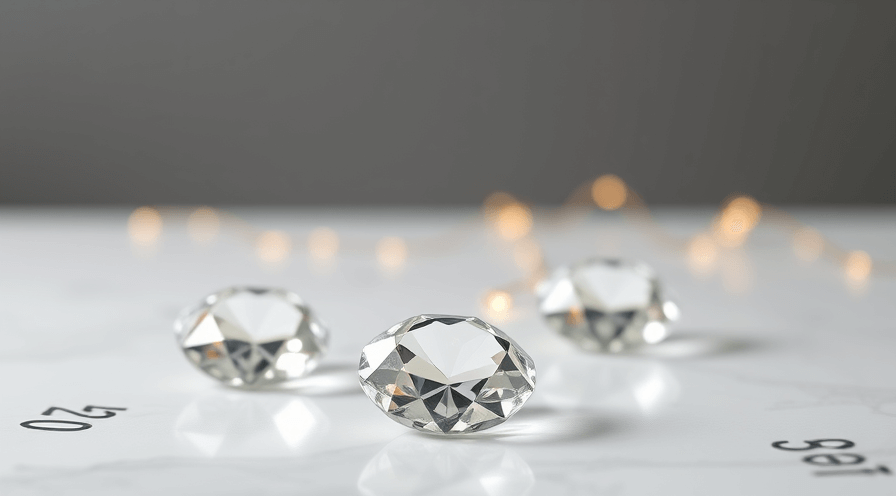Do Lab Diamonds Lose Value? 2025 Resale Market Report
Lab-grown diamonds have surged in popularity over recent years, praised for their ethical sourcing and affordability. As these gems enter mainstream jewelry markets, many consumers and investors alike wonder: do lab diamonds lose value over time? Exploring the 2025 resale market reveals important insights into how these man-made diamonds retain—or fail to retain—their worth compared to their natural counterparts. This article delves into the latest trends, resale dynamics, and factors influencing lab diamond value retention in today's evolving marketplace.
Comparing Lab Diamonds to Natural Diamonds in the Resale Market
Lab-grown diamonds chemically and physically replicate natural diamonds but differ in origin, with synthetic processes creating them in controlled environments. This fundamental difference shapes their resale value dynamics in several ways.
Price Differential and Initial Market Value
Generally, lab diamonds enter the market priced at 30% to 40% less than natural diamonds of similar size and quality. This price gap reflects production costs, consumer perception, and supply-demand factors. However, this disparity also impacts their resale performance.
- Lower Wholesale Value: Resale prices for lab diamonds tend to fall below purchase prices more steeply than those for natural diamonds, resulting in higher depreciation rates.
- Less Established Secondary Market: With a younger resale market and fewer dedicated buyers, liquidity is lower for synthetic diamonds.
- Perceived Durability of Investment: Consumers view natural diamonds as long-term investments, while lab diamonds are often seen as trendier or more accessible options, influencing willingness to pay resale premiums.
Resale Market Channels
The venues where lab diamonds are resold also impact their value retention. Resale platforms include:
- Jewelry Retailers and Certified Resellers: Some high-end retailers begin to accept trade-ins on lab diamonds, but policies vary widely.
- Online Marketplaces: Peer-to-peer platforms and specialized websites provide more liquidity but often at reduced prices.
- Pawnshops and Local Buyers: These tend to offer the lowest prices due to risk and lack of specialization.
Factors Contributing to Value Loss in Lab Diamonds
Several market and intrinsic factors influence why lab diamonds often lose value more rapidly than their natural counterparts.
Supply and Production Advances
Advances in technology have lowered the cost of producing quality lab-grown diamonds, increasing supply. While this growth supports affordability, it also depresses resale prices.
- Rapid innovation enables producers to create bigger and clearer diamonds at lower costs.
- Expanding producers from various regions contribute to an abundant marketplace.
- Consequently, lab diamonds depreciate faster due to oversupply and minimal scarcity.
Consumer Perception and Demand Shifts
Consumer attitudes towards lab diamonds affect their demand in the resale sector:
- Ethical appeal attracts new buyers but does not always translate to higher resale value.
- Lab diamonds are sometimes viewed as 'fashion stones' with less sentimental or investment appeal.
- Fluctuations in consumer trends cause price volatility in the resale market.
Certification and Grading Impact
Certifications from reputable labs such as GIA, IGI, or EGL enhance resale potential by verifying diamond quality. However, discrepancies exist:
- Certification standards and recognition can vary, influencing buyer confidence.
- Lab diamond grading reports often emphasize technical details, but some buyers prioritize brand and stone provenance.
- Reliable certification is crucial but does not fully mitigate depreciation.
Insights from the 2025 Lab Diamond Resale Market
Current market research and sales data from 2025 reveal emerging patterns in lab diamond value retention.
Data from Industry Experts
Leading appraisal firms and diamond resale platforms indicate:
- Lab diamonds typically depreciate by 40% to 60% within the first few years after purchase.
- Natural diamonds, by contrast, may retain 70% or more of their retail value over the same period.
- Higher-quality lab diamonds with exceptional clarity and cut perform slightly better but still lag behind comparable natural stones.
Case Studies
Examples from resale platforms showcase varied outcomes:
- A one-carat round lab diamond purchased at $2,000 might resell for $900 to $1,200 after two years.
- Natural diamonds of similar specifications often resell at $1,500 or higher in comparable timeframes.
- Consumers returning lab diamonds to retailers for trade-in often receive offers approximately 30%-50% below original purchase prices.
Strategies to Maximize Resale Value for Lab Diamonds
Though lab diamonds tend to depreciate more, buyers can take steps to preserve value and leverage market conditions.
Purchase with Resale in Mind
Consider the following:
- Choose Certified Stones: Always select lab diamonds with reputable certification to boost buyer confidence.
- Opt for Classic Cuts: Timeless shapes such as round or princess cuts tend to have broader resale appeal.
- Buy from Trusted Retailers: Establishing purchase provenance may ease future resale negotiations.
Timing and Market Awareness
Watch trends carefully:
- Sell during periods of heightened demand to achieve better prices.
- Avoid oversaturated market times when lab diamond inventory floods resale channels.
Explore Alternative Markets
Alternative sales channels may offer advantageous options:
- Consignment sales through specialized jewelers can garner higher returns than quick resale outlets.
- Online auction platforms sometimes reach niche buyers willing to pay premiums.
Summary and Final Thoughts
Lab diamonds provide an accessible and ethical alternative to natural diamonds, with lower upfront costs appealing to many consumers. However, the 2025 resale market confirms that they generally lose value faster and more deeply than natural stones. Key factors such as expanding supply, consumer perceptions, and resale market maturity contribute to this trend. Buyers considering lab diamonds should approach their purchase with a clear understanding that these gems may not hold or appreciate value akin to natural diamonds.
For those who prioritize long-term investment or resale potential, natural diamonds remain the safer choice. However, lab diamonds excel as beautiful, budget-friendly options emphasizing sustainability and innovation. By selecting certified stones, classic cuts, and timing resale strategically, owners can improve resale outcomes in an evolving marketplace.
If interested in further details or resale options, readers are encouraged to consult professional appraisers and explore reputable resale platforms to make well-informed decisions tailored to their needs.
